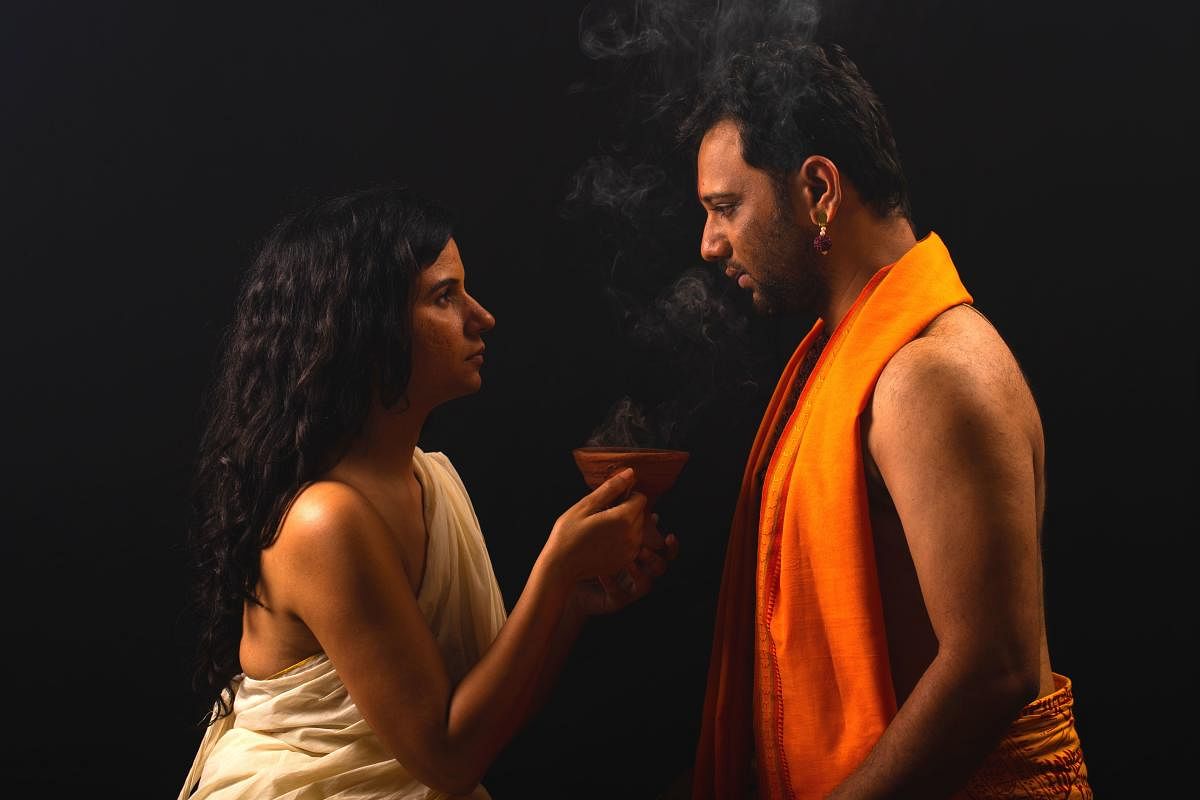
Rabindranath Tagore’s ‘Chitraa’ has been staged on several platforms across the globe. But imagine staging it for a virtual audience.
Red Polka Productions took ‘Chitraa’ to the digital platform on May 28, for the very first time.
The play was directed remotely in accordance with the social distancing rules. Independent filmmaker Prataya Saha and veteran theatre personality Shatarupa Bhattacharyya directed it.
The crew included Bengaluru-based theatre artistes Anshulika Kapoor, Subhabrata Kundu and Archana Kariappa.
Directors Prataya and Shatarupa tell Metrolife their experience of adapting the play for a digital audience.
After the stage success of ‘Chitraa’, how was it for you to direct and produce it for a virtual platform?
The biggest challenge was that none of us were physically present with the actors in one space. We directed them through online portals. We had to ensure that instructions were rightly communicated to the actors. We have in our group artistes who do not have much experience in front of the camera. To shepherd them through that was a unique challenge. We were also battling with variable internet speeds, camera equipment and availability of electricity. We had to work with limited resources to bring this play to life on screen.
What changes did you make to adapt it to the virtual platform?
We have changed the narrative of the story and have introduced a ‘sutradha’ to guide the audience through the scenes, which was something that was not there in the stage production. The purpose of doing so is to shift the storytelling format from the original script which we felt was apt for the virtual platform. In addition to that, we have ensured that the movements of the actors are restricted in very definitive spaces. They are concise and compact, boiling down to very specific action pertaining to the scene. We have also done away with the sets and the actors have performed in front of a black or white background. So unlike the stage, the audience had to rely a lot on their own imagination.
The play was originally written by Rabindranath Tagore. How have you tweaked and adapted it to modern times?
The play was written by Tagore over a hundred years ago, and over the years, the audience has changed and so have their taste. Therefore, although the play and its theme is eternal, we wanted to make the play a little more palatable to the audience in the tune with the current audience.
So certain scenes of the play, especially the parts that have comedy, have been modernized — the way the actors interact and the choice of words they use — it is more contemporary.
However, parts of the play that delve into drama and romance between Arjuna and Chitra, have been kept intact and vintage, just like Tagore had written, so that the audience does not miss out on the eternal genius of Tagore.
Do you think virtual production of plays will have the same effect when it is performed on stage? How do you plan to keep the viewers gripped to what’s happening?
It might have had a different effect which does not mean that it would be any less.
I think as directors, we are all aware that the unique effect of stage and virtual productions of plays is not to undermine the original effect, but to create a different sphere of influence.
However, the objective of doing virtual theatrical productions is also to keep theatre alive in such testing times. This is Rabindranath Tagore’s work in its finest form.
Apart from that, we have the original cast which includes some of the talented and hardworking actors of Bengaluru and they have done an excellent job. This is an honest effort from our side to keep the truest essence of this period drama alive.
When movies are also releasing online, what is the kind of challenge in refurbishing the content?
This experimentation with plays being showcased online is quite new because of the present pandemic situation. With theatres staying closed for a while longer, this kind of experimentation may have its own niche audience.
Theatre will have its own audience and with this new digital format, we might be able to bring in more people interested in theatre; people who till now had been primarily a film audience.